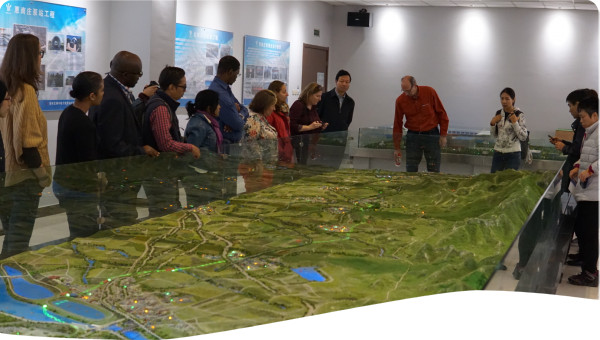Most pressing challenges associated with water resources globally can only be properly addressed if we are able to understand the various elements that make up our complex socio-hydrologic systems. Traditionally, modelling techniques approached water issues from a purely physical/hydraulic standpoint leaving aside the social aspects. Socio-hydrological modelling is the combination of both social science and technical or conventional hydrological modelling which aims to describe the interactions and feedback between social and hydrological systems. While developing socio-hydrological models, human responses (including government and individual behavioural responses) are incorporated to hydrologic extremes (droughts and floods) in hydrological models. Bringing in these social dynamics have allowed water practitioners to shore up an array of elements which impact the management of the water resource which would not be otherwise captured by conventional modelling.
The socio-hydrological modelling can be used for: system understanding; forecasting and prediction; policy formulation and decision making. The typology of socio-hydrological study (historical, comparative, and process) is useful to understand how the systems have evolved throughout the time, comparing how different location have responded to change and investigating the linkages between different parameters are all valuable in the creation of overall system understanding. The natural and anthropogenic intervention on the hydrological system like inter-basin water transfer, drought, or agricultural water use, have a significant impact on the ecosystem as well as to human being’s water need and demand.
Socio-hydrological studies adopt an interdisciplinary approach to gather data from various sources particularly for the historical investigations. These hydrological data are collected through the conventional method while, the social data collection can be rigorous and time consuming. The greater understanding of how human- water interaction affects overall system behaviour leads to the better prediction of system in future. The necessity of including changing norms and values in socio-hydrology exacerbates the uncertainty- changing social, economic, and political systems- since the timescale and way societies change their norms are highly unpredictable and often surprising.
One of the significant issue in socio-hydrological modelling is the fact that, characteristics of human variables make them particularly difficult to handle in models. Due to social science data, conduction of formal calibration and validation of the socio-hydrological modelling is also difficult. Thus, broad experience and knowledge is required to recognize the relationship among the different systems. The sustainable management of water can be achieved by understanding the entire system mechanics rather than concerning to only problem-solving approach.
Some of the major modelling techniques for the socio-hydrological modelling include, Agent based models, System dynamics, and models coupled with GIS.
- Agent based models (ABM) (Fig. 1) are useful methodological approach to deal with large complicated systems derived from multiple factors. ABM have been particularly useful to model water demand and consumption patterns which combines both water technologies (e.g., whether actors in a system have water saving devices) and agent behaviours (e.g., whether agents use their systems in ways that promote water efficiency). ABM are thus used for forecasting purposes put also to test between various potential alternatives on water-related decisions.
Figure 1. ABM framework for simulating Biochemical Oxygen Demand permit trading and Dissolved Oxygen levels in an estuary (Adapted for Zechman Berglund, 2015).
- System Dynamics (SD) is also a suitable decision-support framework for designing water resource policies contributing to successful integrated water resources management practice. It begins with a system conceptualization normally through and identification of the major elements that constitute a system. Then links between the elements are drawn forming so-called causal loop diagrams (CLDs) (Fig. 2). CLDs can be drawn or represented graphically by putting post-its on large pieces of paper. These CLDs can be transcribed into software such as Venism, which allows for a quantification of the strengths of the relationship between these elements. As such, SD allows a model developer to visualise the potential feedbacks and interconnections that may lead to system-level behaviours.
Figure 2. Causal Loop Diagram describing water quality dynamics. Source: Winz et al. (2008).
- Coupled GIS Models (Fig. 3) are used to illustrate different water management issues from a spatial dimension. These are found most commonly in the agricultural water management sector and for flood control and mitigation. A sub-set of these coupled GIS models have been developed to look at issues related to surface and sub-surface water quality and abstraction regimes. Both ABM and SD can be integrated into coupled GIS models.
Figure 3. Discretisation of a watershed in Penn State Integrated Hydrologic Model. Source: Bhatt et al. (2014).

 Tool -
Tool -

